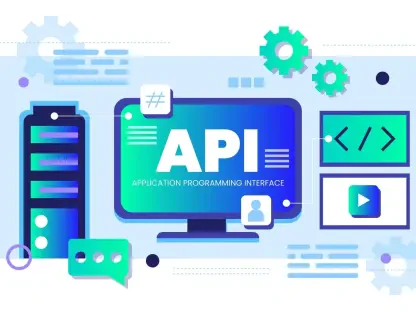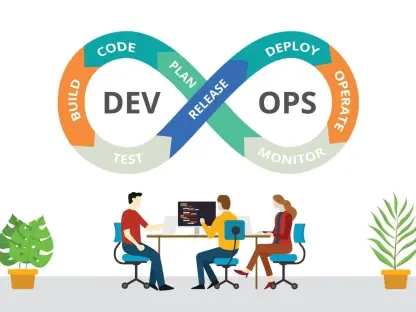I’m thrilled to sit down with Anand Naidu, a seasoned development expert with a wealth of knowledge in both frontend and backend technologies. With his deep understanding of various coding languages, Anand is the perfect person to guide us through the exciting world of network APIs. In this conversation, we’ll explore how these powerful tools are transforming telecom networks into programmable platforms, enhancing app security, performance, and user experience across industries. We’ll dive into specific APIs like Location Verification, SIM Swap, and Quality on Demand, while also discussing the broader implications for developers, including the rise of network-native applications, security challenges, and the importance of ethical standards.
How have network APIs shifted the way developers interact with telecom networks, especially compared to the traditional view of them as just basic connectivity tools?
Network APIs have completely changed the game for developers. In the past, telecom networks were seen as “dumb pipes”—just a way to move data from point A to point B. Now, with APIs exposing powerful network functionalities, developers can program these networks to do so much more. We’re talking about tapping into device location, detecting SIM swaps, or even requesting prioritized network performance. It’s like turning a simple highway into a smart grid where you control the traffic flow. This shift means developers across industries—not just telecom—are building apps that are more aware, secure, and responsive to real-time conditions.
Can you explain how the Location Verification API works and why it’s such a valuable tool for preventing issues like banking fraud?
Absolutely. The Location Verification API uses telecom data alongside GPS to confirm a user’s actual location. This isn’t something a user can fake, which makes it incredibly powerful for security. In banking, for instance, if a transaction is initiated from a location that doesn’t match where the user’s device is verified to be, the system can flag it as potential fraud and block it. This network-verified trust adds a layer of protection that’s much harder to bypass compared to traditional methods, giving developers a reliable way to safeguard their users.
How might a retail app leverage the Location Verification API to create a better experience for customers?
Retail apps can use this API to offer hyperlocal deals or services based on a user’s verified location. Imagine a customer walking into a store—because the app knows they’re physically there through network data, it can push a personalized discount or notify them about an in-store event right at that moment. It’s all about context-aware engagement, making the shopping experience feel seamless and tailored, which can really boost customer loyalty.
What are some of the potential risks associated with using location data through network APIs, and how can developers address them?
The biggest risks with location data are privacy violations and misuse. If not handled properly, this data can be exploited or accessed without proper consent, which erodes trust. Developers need to prioritize user transparency—always inform users how their data is being used and get explicit permission. Additionally, adhering to frameworks like Privacy by Design and ensuring robust encryption during data transmission can help mitigate security breaches. It’s about treating location data with the same care as financial or medical information.
Turning to the SIM Swap API, can you walk us through how it helps protect users from account takeovers?
The SIM Swap API is a critical tool in fighting cybercrime. It allows developers to check if a user’s SIM card has been recently changed, which is a common tactic used by fraudsters to hijack accounts and bypass two-factor authentication. If a SIM swap is detected, an app can trigger additional security measures—like blocking a transaction or requiring alternative verification. This proactive approach stops account takeovers before they happen, rather than just cleaning up the mess afterward.
How can fintech companies specifically benefit from integrating the SIM Swap API into their security protocols?
Fintech companies deal with high-stakes transactions, so security is paramount. By integrating the SIM Swap API, they can add an extra layer of defense against fraud. For example, if a user tries to log in or make a large transfer right after a SIM swap, the system can flag it as suspicious and require further authentication. This not only protects the user’s funds but also builds trust in the platform, which is crucial for customer retention in the competitive fintech space.
What steps should developers take to ensure they’re using the SIM Swap API responsibly, especially when it comes to user privacy?
First and foremost, developers must be transparent about why they’re accessing SIM swap data and how it will be used. Clear consent mechanisms are non-negotiable—users should opt in knowingly. Beyond that, minimizing data collection to only what’s necessary and securing it with top-notch encryption are key. Developers should also stay updated on regulations and ethical guidelines, like those from 3GPP, to ensure they’re not overstepping boundaries. Privacy isn’t just a legal box to check; it’s a core part of user trust.
Let’s discuss the Quality on Demand API. How does it enable developers to enhance app performance for specific use cases?
The Quality on Demand API lets developers request enhanced network performance—like lower latency or guaranteed bandwidth—for specific app sessions. This is huge for scenarios where performance is critical. Developers can dynamically adjust network conditions to match the app’s needs at a given moment, whether it’s ensuring smooth video streaming or supporting real-time data for critical operations. It moves us away from a one-size-fits-all network approach to something tailored and purposeful.
Can you share a practical example of how a telemedicine app might use the Quality on Demand API to improve user experience?
Sure. In telemedicine, video consultations need to be crystal clear and uninterrupted for accurate diagnoses. With the Quality on Demand API, a telemedicine app can request higher bandwidth and lower latency during a patient’s session. This ensures the doctor and patient can communicate without glitches or delays, even if the network is busy. It’s a perfect example of how network performance can directly impact the quality of service in a life-critical application.
What kind of impact do you foresee the Quality on Demand API having on industries like gaming or autonomous vehicles?
The impact could be transformative. In gaming, this API can prioritize network performance during competitive matches, reducing lag and giving players a fair shot—something that’s a huge deal in esports. For autonomous vehicles, it’s even more critical. These systems rely on real-time data for safety decisions, so being able to request prioritized communication during high-risk situations—like navigating a crowded intersection—could literally save lives. It’s about making sure the network supports the app when it matters most.
You’ve mentioned the concept of ‘network-native applications.’ Can you explain what that means and how they differ from traditional apps?
Network-native applications are built to interact directly with the telecom network as a core part of their functionality, rather than just using it as a conduit for data. Unlike traditional apps that treat the network as a background utility, network-native apps leverage APIs to access real-time network intelligence—like location, identity, or performance metrics. This makes them smarter, more responsive, and deeply integrated with the network’s capabilities, fundamentally changing how they deliver value.
How do you see network-native apps reshaping industries like banking or supply chain management?
In banking, network-native apps can use APIs for fraud detection right at the telecom layer, verifying user identity or location instantly to prevent unauthorized transactions. For supply chain management, location APIs can confirm deliveries or track assets in real time with network-verified data, reducing errors and improving efficiency. These apps don’t just use the network; they collaborate with it to solve industry-specific challenges, creating more reliable and innovative solutions.
What are some of the biggest advantages for developers when they integrate network APIs into their workflows, especially for security and compliance?
One of the biggest advantages is access to telco-grade validation. Network APIs provide reliable, real-time data straight from the source, whether it’s confirming a user’s location or detecting a SIM swap. This simplifies application logic—developers don’t have to build complex fraud detection or security systems from scratch. Plus, for compliance, these APIs often come with built-in adherence to strict standards, reducing the risk of regulatory missteps. It’s a shortcut to both security and trust.
On the other hand, what are some of the main challenges or risks developers face when working with network APIs?
The challenges are real. There’s always a risk of misuse—whether intentional or accidental—that could lead to privacy breaches or security vulnerabilities. If consent isn’t handled properly, users might feel their data is being exploited. Then there’s the technical side: integrating these APIs requires a learning curve, and not all networks support them uniformly yet. Developers need to be vigilant, prioritize ethical practices, and stay on top of evolving standards to avoid pitfalls.
How are initiatives like CAMARA and GSMA Open Gateway contributing to the standardization and security of network APIs?
Initiatives like CAMARA and GSMA Open Gateway are crucial for creating a unified ecosystem. They’re working to standardize how network APIs are exposed and accessed, which reduces fragmentation and makes it easier for developers to build across different networks. On the security front, they promote best practices and frameworks to ensure APIs are implemented with safeguards in place, protecting both developers and users. It’s about building a reliable, secure foundation for this technology to scale globally.
How do ethical frameworks like 3GPP consent guidelines or Privacy by Design influence the responsible use of network APIs?
These frameworks provide a roadmap for developers to use network APIs ethically. The 3GPP consent guidelines ensure users are informed and in control of how their data is accessed, which is fundamental to trust. Privacy by Design pushes developers to bake privacy protections into their apps from the ground up, rather than as an afterthought. Together, they encourage a mindset of responsibility—reminding us that with great power comes the need to prioritize user rights and security at every step.
What is your forecast for the future of network APIs and their role in shaping the next generation of applications?
I’m incredibly optimistic about the future of network APIs. I believe they’ll become a cornerstone of app development, much like the cloud did over the past decade. We’re going to see a wave of smarter, more connected applications that are deeply integrated with network intelligence—think apps that anticipate user needs based on real-time data or provide unbreakable security through network validation. As standardization efforts mature and more developers jump on board, network APIs will redefine industries, making apps not just functional but truly aware and adaptive. It’s an exciting time to be in this space.









